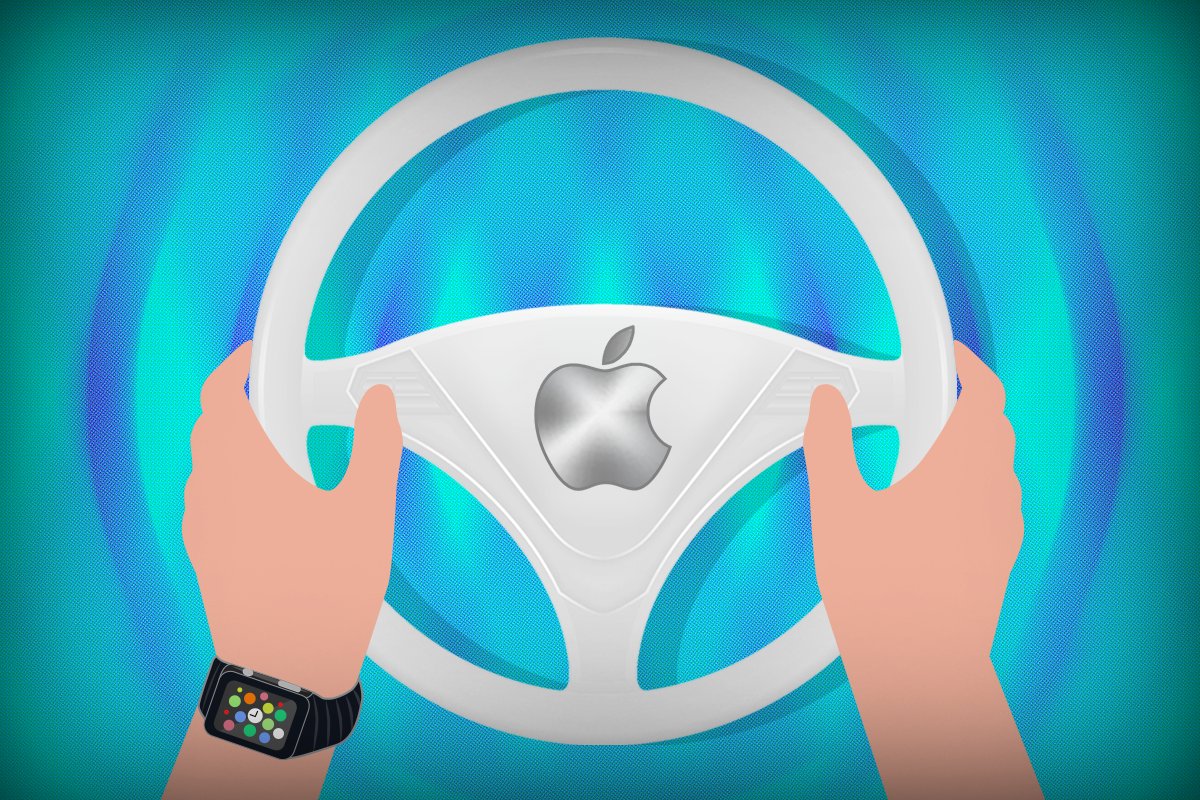 Skye Gould/Business InsiderConnected on the road.
Skye Gould/Business InsiderConnected on the road.The traditional car-making world is starting to take the Apple Car very seriously.
The buffest of the “buff books” — so called because they’re magazines that appeal to ultra-auto-enthusiasts — is Motor Trend, and that publication recently convinced students at Art Center College of Design in Pasadena to come up with ideas for what Apple might be doing with its mysterious “Project Titan.”
The results were predictable but also fascinating: the Apple Car would effectively be a rolling interface platform, self-driving, powered by (of course) electricity.
Motor Trend is really pushing itself here: this is a magazine that has always been about the driver, first and foremost. And the intensely gearheady driver, at that. For it to dive this deeply into the Apple Car, even on a speculative basis, is a sign that the times really are changing.
What’s most notable about the MT-Art Center collaboration (by the way, Art Center’s Transportation Design program is regarded as the world’s best) is how little car there is in the conceptualization of the Apple Car could be.
Designing the experience
In may ways, Apple is an experience design company, and that’s what Motor Trend and Art Center zeroed in on.
This is actually the dominant mode of thinking in the technology world about how the “car” of the future will function. In the past, most cars were: built on assembly lines owned and operated by the companies that designed and engineering the cars; sold to individuals; driven by humans; designed as transportation platforms first and as interactivity platforms a distant second (for years, all you had was an AM/FM radio).
If Apple and other tech companies are getting into the car game, it’s safe to assume that they’ll consider the vehicle a design challenge and something that’s currently antithetical to their business models. You really can’t safely interact with an iPhone in a car; Kelley Blue Book just released a study that shows distracted driving accounts for one in five auto accidents in the US and is skewed toward drivers under 20. Apple CarPlay and Android Auto can alleviate some of this, but fiddling with various controls at any level when you should be hands-on-the-wheel, eyes-on-the-wheels is obviously a huge risk.
 BI Screenshot/Motor Trend ChannelMotor Trend and Art Center’s take on the Apple Car.
BI Screenshot/Motor Trend ChannelMotor Trend and Art Center’s take on the Apple Car.
Solving the problem
So really, the car is the problem.
Solution? Design the car out of existence.
What you’re left with is something with four wheels that drives you around while you interact with media. For a large number of people who have to commute every day, this opens up potentially hours that could be spent using Apple devices or services.
Some of this has already happened. Passengers with wifi connections in cars can remain connected while being driven around. But there are still lots of folks who are doing the driving and are the only people in the vehicle.
The objective, then, is to stop losing this group of users’ time. A venture capitalist once told me that the big flaw with modern life is that we can’t manufacture anymore attention. So you need to be where the attention is.
The objective isn’t to sell these users a car. The whole Apple Car project just aligns automotive time with Apple Time — the ever-connected state that now defines our lives.
Well, it does that if Apple’s Project Titan is as ambitious as Motor Trend and Art Center think it is. Apple could simply be trying to keep pace with Google and have an experimental platform to keep CarPlay relevant.
But if we dream a little, we can see where this is headed: the “car” becomes a space that’s connected as equally as all our other spaces. It isn’t special anymore. There’s no escape.
NOW WATCH: Elon Musk admits that Tesla may not be prepared to meet demands for $11 billion in preorders for their new Model 3
















